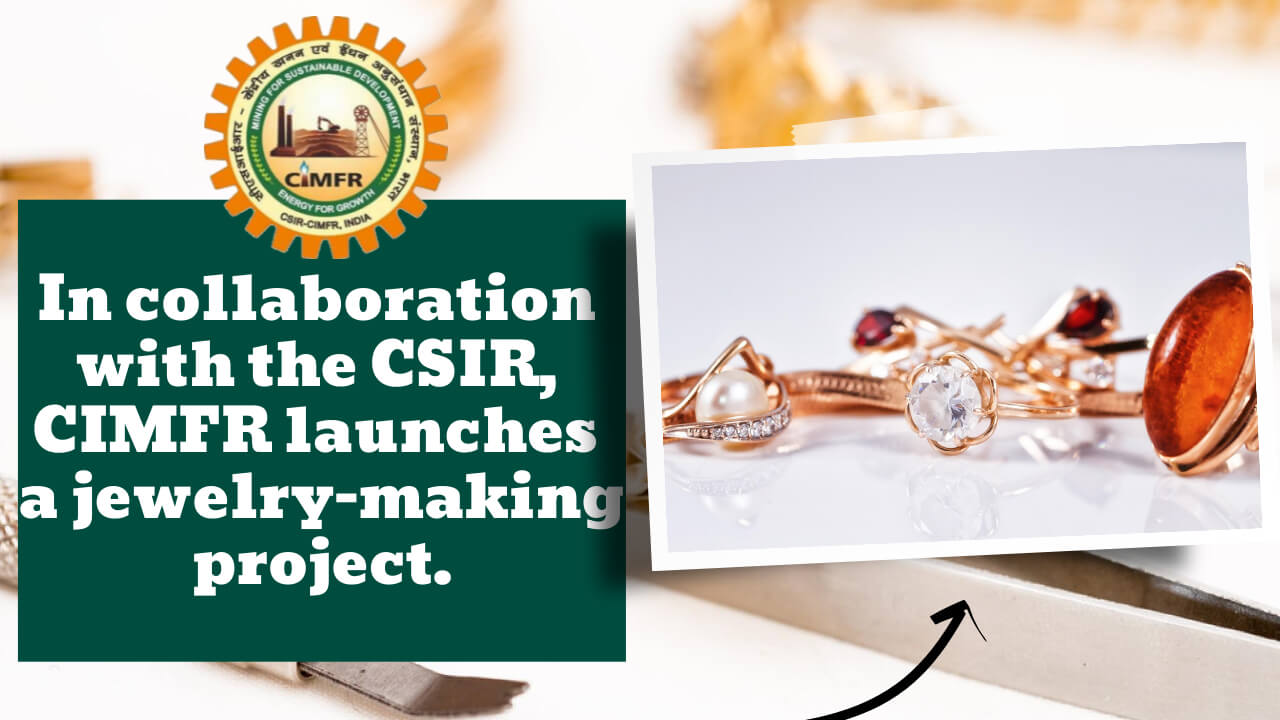The project is being carried out by the Central Institute of Mining and Fuel Research (CIMFR) in Dhanbad. The project’s objective is to provide a stable source of income for farmers in mining areas. Jewellery fashioned from waste coal will be sold at a price of Rs 500 per gram. Apart from being durable and light, jewelry is also lightweight. Jewelry manufacturing will take place via CIMFR’s e-portal, Gramin Market. The project aims to provide local residents with a stable source of employment.
Key Highlight:
- Jewellery fashioned from waste coal will be sold at a price of Rs 500 per gram.
- Jewelry manufacturing will take place via CIMFR’s e-portal, Gramin Market.
- The project aims to provide local residents with a stable source of employment.
- The idea of starting a jewelry making project from coal came to her last year while visiting a mine where she saw a huge amount of waste coal lying unutilized.
- The two-year project funded by the Central Institute of Mining and Fuel Research is aimed at providing a permanent source of income to a large number of farmers living in mining areas.
The Central Institute of Mining and Fuel Research (CIMFR), a premier research laboratory of the Council of Scientific and Industrial Research (CSIR), is working on a project to develop jewelry from coal to provide a sustainable source of income to people living in and around colliery areas by imparting the necessary skills of producing jewellery of coal, through value addition of waste coal available in abundance in Jharkhand.
The Renewable Energy and Biotechnology section of the institute, led by its principal scientist, Dr. Vatrivel A Selvi, who is also the project leader, has already conducted initial training for a group of residents in this regard.
“Many people prefer ethnic and black color jewelry,” Selvi explained, “and we just need to carry out a value addition by ensuring shining and polishing of waste coal to mold it into the shape of jewellery like necklace, pendant as an abundant amount of coal is otherwise of no use in the mining areas and also creates the problem of solid waste management if lying unutilized.”
Selvi elaborated on the project, saying, “The two-year project funded by the Central Institute of Mining and Fuel Research is aimed at providing a permanent source of income to a large number of farmers living in mining areas by providing training to them as farming is not a year-round work and requires full-time involvement for only three months while the farmers remain idle for the rest of the year.”
“People in the hinterland of Jharkhand are very skilled in tribal art, which is unique, so under the project, they will be utilizing their artistic skills on waste coal by polishing and refining it to make beautiful jewelry with an ethnic look,” said Selvi, a resident of Tamil Nadu, who added that the idea of starting a jewelry making project from coal came to her last year while visiting a mine where she saw a huge amount of waste coal lying unutilized.
“Coal is typically used as a fuel due to its combustion property, and recently, other uses such as liquefaction and gasification have begun,” Selvi explained, adding that “under the current project, we are carrying out value addition of coal by its processing, which includes its hardening, molding, shining, and so on.” Selvi also stated that “more rounds of training are to be carried out under the project, but due to guidelines, they could not hold more rounds of training for the beneficiary common.”
Notably, coal processing for the production of jewelry involves holding pieces of coal and coal dust together with a binder. Thus the jewelry can be sold at Rs 500 per gram after the presentation. Coal jewelry is not only durable and light, but it is also lightweight. The marketing of coal-made jewelry will take place through CIMFR’s e Portal, Gramin Market.
“The project, aside from ensuring innovative coal utilization, will also ensure a sustainable source of employment for the local people of mining areas,” said PK Singh, director of the Central Institute of Mining and Fuel Research.





[…] CIMFR collaborates with the CSIR on a jewelry-making project. […]